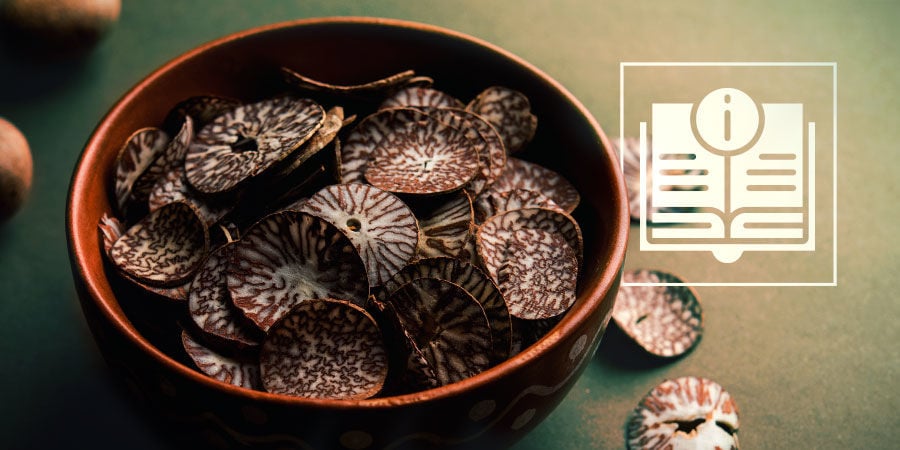Betel Nut: Everything You Need To Know

Betel nut has a long and rich history of use in Asia, and people still use it as a welcoming gift to this day. Chew on these small pods to get your day started on the right foot. They provide a fresh, peppery taste and offer a warming sensation in the body.
What is Betel Nut?
As the fruit of the Areca Catechu palm tree, the betel nut is a stimulating and endurance increasing seed that has been widely used throughout Asia as a daily supplement. Found growing in Asia, the tropical Pacific, and east Africa, the tree is thought to have originated from the Philippines, from where it was then spread through international cultivation.
Thanks to its general acceptance throughout Asia, betel nut actually goes by many names – the most common of which are areca nut, Indian nut, paan, pinang, and bunga. In fact, areca nut is technically its correct name, it is only referred to as betel nut as it is traditionally chewed with betel leaf – they are not actually related in any way. The betel plant is a completely separate vine belonging to the Piperaceae family.
The betel nut has a rich and entwined history of use, dating back thousands of years. Its use as a daily supplement has persevered to this day, and is still extremely popular in parts of Asia – particularly India and Pakistan. Betel users can often be identified by their red teeth and the act of frequent spitting on the ground, as regular betel use has the side effect of increased saliva production.
The Effects of Betel Nut

The main effect of the betel nut is stimulation. Betel nut contains arecoline – its main active compound. Arecoline is a mild stimulant that boosts the central nervous system, as well as increasing respiration. As a result the user experiences increased energy and alertness, as well as improved serial learning and memory. Anecdotal reports also suggest that betel nut elevates mood and induces euphoria, likely a result of the stimulating, refreshing feel.
History of Betel Nut

The earliest written mention of human betel nut use dates all the way back to the 1st century, where Sanskrit writings refer to it as having 13 heavenly qualities. Although the tradition of chewing the betel nut dates back thousands of years, it is not known when or why the nut and betel leaf where combined into the resulting psychoactive concoction, but archaeological evidence shows how it has been done so for at least 4000 years.
Today, its traditional use varies from culture to culture. In Vietnam, betel nut is an important symbol of marriage. In Malaysia, it is seen as a way of greeting people into your house, offering guests the nut and leaf in the same way a guest may be offered a drink in a Western household. The use of betel nut in India dates all the way back to the pre-Vedic period of the Harappan Empire. It was seen as the habit of royalty, and kings even had special attendants whose job it was to carry around the nut and leaf for them in case the king longed for a chewing session.
These are but a few examples, betel has a rich history of use throughout Asia, holding a different significance culture to culture.




 Seedshop
Seedshop Headshop
Headshop Vaporshop
Vaporshop Healthshop
Healthshop Smartshop
Smartshop Shroomshop
Shroomshop Plantshop
Plantshop United States
United States














